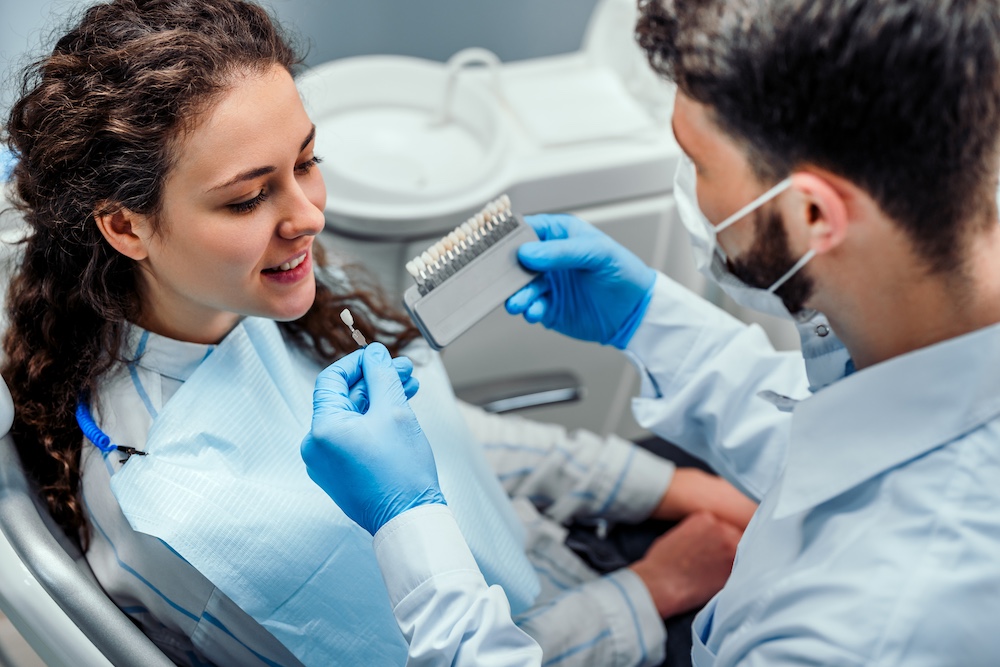Dental crowns are one of the most common dental procedures, which are used to restore and protect damaged teeth. They are the go-to solution for many patients who present with cracked, decayed, or weakened teeth that are causing discomfort or pain. However, dental crowns aren’t a perfect science and are prone to some issues, from sensitivity to falling off.
1. Discomfort and Sensitivity
After receiving a dental crown, some patients may experience discomfort or sensitivity. This can range from mild to severe and is often caused by the crown not fitting properly or sitting too high on the tooth. Sensitivity may also occur if the tooth's nerve was irritated during the crown placement.
In many cases, discomfort and sensitivity are temporary and should resolve within a few days as the tooth adjusts to the crown. Using desensitizing toothpaste during this period can help minimize sensitivity. However, if the issues persist, it's essential to consult the dentist who placed the crown. They can assess the situation and make any necessary adjustments to ensure a proper fit and relief.
2. Chipping or Fracturing
Dental crowns are designed to be durable, but they can still chip or fracture if exposed to excessive force or wear. Common culprits are chewing on hard objects, grinding teeth at night, or using them to open packaging.
If you notice a chipped or fractured crown, your dentist should be contacted immediately to assess the extent of the damage and provide treatment. To avoid another chip or fracture after repair, avoid chewing on hard foods or objects, and wear a nightguard if you’re prone to grinding your teeth while you sleep.
3. Loosening or Falling Off
It’s not uncommon for dental crowns to become loose or fall off, which usually happens due to inadequate cementation, decay under the crown, or trauma to the tooth.
These are situations that require immediate attention from your dentist, and you should avoid attempting to reattach the crown yourself to avoid further complications. If your dentist cannot see you right away, use dental adhesive from the pharmacy to temporarily reattach the crown. This is a short-term solution that should help until you can see your dentist.
4. Gum Recession and Crown Margin Exposure
Gum recession is when the gum tissue pulls away from the base of the tooth, exposing the crown's margin, which is the space between the crown and the natural tooth. This can make the crown appear unsightly and cause decay in the underlying tooth structure.
This is a scenario that is often caught during a routine dental exam when your dentist checks your gum health. Gum grafting is a corrective option to restore lost gum tissue and cover the exposed crown margins, which your dentist may recommend depending on the degree of recession.
5. Allergic Reactions to Crown Materials
In rare cases, individuals may experience allergic reactions to the materials used in dental crowns, such as metal alloys or ceramics. Symptoms can include gum inflammation, discomfort, or pain.
If you suspect an allergic reaction, it’s important to consult your dentist right away. They can identify the cause of the reaction and suggest alternative materials for your crown. If you have a history of contact allergies, inform your dentist beforehand. Patch testing can be performed to help identify potential sensitivities before placing the crown, ensuring a safer and more comfortable treatment.
6. Tooth Decay Underneath the Crown
One of the biggest advantages of dental crowns is their ability to protect and strengthen damaged teeth. However, if oral hygiene is neglected, tooth decay can develop underneath the crown and cause issues.
In order to avoid this, maintain excellent oral hygiene with regular brushing, flossing, and the use of an antimicrobial mouthwash to prevent decay. Make sure to clean around the crown area thoroughly and consistently. Also, visit your dentist for regular check-ups and cleanings to detect any signs of decay early. Your dentist can take X-rays to check the condition of the tooth underneath the crown. If decay is found, your dentist may need to remove the crown, treat the decay, and replace the crown.
7. Esthetic Issues
Dental crowns are crafted to closely resemble natural teeth, but esthetic concerns can sometimes occur. These may include a color mismatch with surrounding teeth or an unappealing appearance. If you're dissatisfied with your crown's look, share your concerns with your dentist. They can recommend solutions such as replacing the crown, veneers, or teeth whitening. Dentists also collaborate with dental laboratories to customize shades that blend seamlessly with your natural teeth, ensuring a more attractive result.
While dental crowns are a reliable solution for restoring damaged teeth, challenges can arise. Maintaining proper oral hygiene, addressing issues promptly, and following your dentist’s advice are essential for preventing and resolving common problems. Open communication with your dentist plays a vital role in extending the life and effectiveness of your crown.
Contact us to learn more about dental crowns, potential complications, and how we can help!


